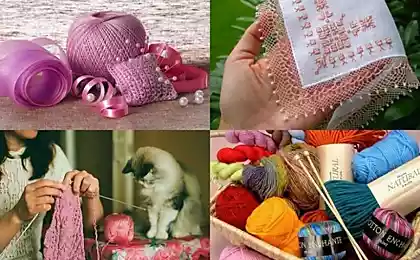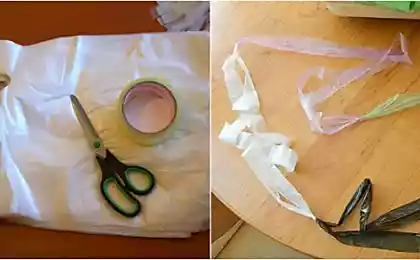168
The ancient technique of weaving on the fingers
It has long been proven by scientists and doctors that needlework is not only fascinating and interesting, but also a very useful occupation. This is especially true for knitting and various types of weaving.
This type of creativity enjoys great love of women as an anti-stress remedy. Creativity classes can normalize the work of many systems of our body.
Today's edition. "Site" I will tell you, dear reader, about a very interesting technique. finger-weaving. They knew about it in ancient Russia!

How to weave on your fingers In people this technique of weaving on your fingers It's called "twitching.". Weaving is traditional, Russian. And it started a long time ago. Our ancestors wove in this technique belts, all sorts of laces and jewelry.

Before mastering real weaving, humanity seems to have mastered all sorts of weaving. The girls of the lower classes of schools are still entertained at recess with a game of “strings”. It cannot be ruled out that in this game there is an echo of the ancient method of weaving, or “twitching” of string.
Even in the early Middle Ages, the Slavs and Finno-Ugrics, who lived on the territory of our lands, weaved such narrow durable tesemki for skinning ponies (an element of Russian folk costume), as loops for buttons, "Gashnikov" (trousers for trousers) and "domestic." Thesesems made of thick wool threads were used to make bracelets.
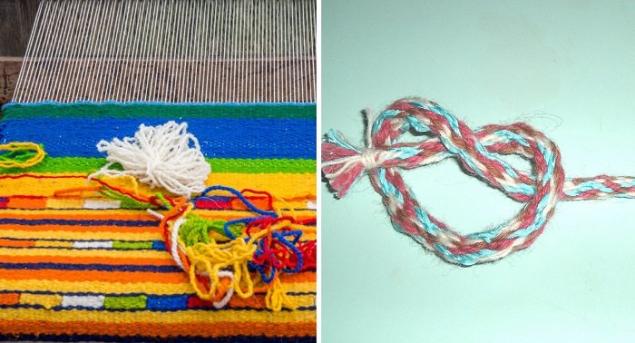
Ethnographers note that such weaving It was widely distributed in ancient times, since it was used not only by representatives of the Slavic people (ethnos), but also by Finnish people. This is confirmed by archaeologists: during excavations, fragments of such laces and tesems are found.

Today, handmade things are increasingly in fashion, and clothes or accessories in the ethno style are especially appreciated. This, by the way, is one of the reasons why this technique of weaving is now experiencing its second birth!
During weaving, you can use from 5 to 9 threads of any thickness. It is important that the thread is an odd number! Before starting work, the thread must be folded in half and tied to something stationary. For example, a chair turned back forward.

The ends of the threads must remain loops. To start weaving, put loops on your fingers as shown in the photo below, observing the exact sequence of your fingers.
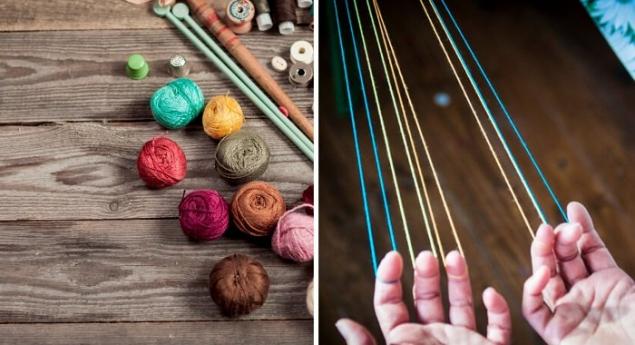
With the little finger of the right hand, turning it under the right side of the hinge worn on the fingers, begin to capture a distant thread.
Run the thread through the loops. Thus, on the right hand you will have three loops, and on the left - two.

Next, move the loops on the right hand sequentially so that the little finger remains free. Repeat the action mirror, while the little finger of the left hand start under the second thread of the loop, as shown in the photo.
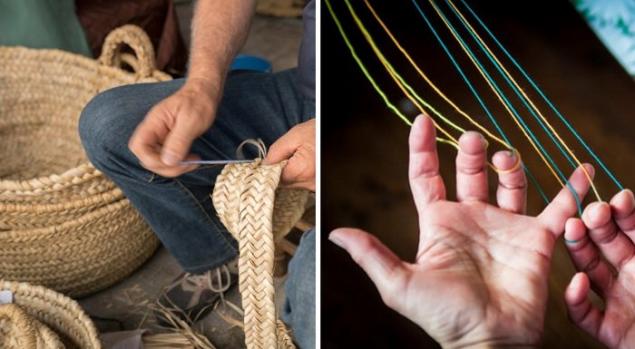
In the end, you'll succeed. openwork. The pattern can be very different, this business is creative, everything depends only on your mood and desire.

To learn more about this technique, watch the video.
about:blank
And in this video, you'll find out. strap It's a twitch technique.
about:blank
Creativity has a truly beneficial effect on the human body. Knitting and weaving helps with diseases of the nervous system, spinal injuries, concussion, and also contributes to the speedy recovery from depression and helps to endure severe shocks. It turns out a double benefit - nerves soothe and beautiful products come out!

As you can see, the method of weaving is not at all difficult, which means that both adults and children will cope with it. In addition, “twitching” does not require special equipment! All you need is a few strings, yours. skillful And the desire to create.
master finger-weavingYou can weave bright bookmarks for books, a bracelet on your hand, a beautiful strap for hairstyle or finish a linen apron or skirt. And, of course, a stylish belt. Personally, when I am engaged in needlework, I experience true pleasure both from the process of work and from the result in the end.
Did you like the article? Tell your friends about it on social media!
This type of creativity enjoys great love of women as an anti-stress remedy. Creativity classes can normalize the work of many systems of our body.
Today's edition. "Site" I will tell you, dear reader, about a very interesting technique. finger-weaving. They knew about it in ancient Russia!

How to weave on your fingers In people this technique of weaving on your fingers It's called "twitching.". Weaving is traditional, Russian. And it started a long time ago. Our ancestors wove in this technique belts, all sorts of laces and jewelry.

Before mastering real weaving, humanity seems to have mastered all sorts of weaving. The girls of the lower classes of schools are still entertained at recess with a game of “strings”. It cannot be ruled out that in this game there is an echo of the ancient method of weaving, or “twitching” of string.
Even in the early Middle Ages, the Slavs and Finno-Ugrics, who lived on the territory of our lands, weaved such narrow durable tesemki for skinning ponies (an element of Russian folk costume), as loops for buttons, "Gashnikov" (trousers for trousers) and "domestic." Thesesems made of thick wool threads were used to make bracelets.

Ethnographers note that such weaving It was widely distributed in ancient times, since it was used not only by representatives of the Slavic people (ethnos), but also by Finnish people. This is confirmed by archaeologists: during excavations, fragments of such laces and tesems are found.

Today, handmade things are increasingly in fashion, and clothes or accessories in the ethno style are especially appreciated. This, by the way, is one of the reasons why this technique of weaving is now experiencing its second birth!
During weaving, you can use from 5 to 9 threads of any thickness. It is important that the thread is an odd number! Before starting work, the thread must be folded in half and tied to something stationary. For example, a chair turned back forward.

The ends of the threads must remain loops. To start weaving, put loops on your fingers as shown in the photo below, observing the exact sequence of your fingers.

With the little finger of the right hand, turning it under the right side of the hinge worn on the fingers, begin to capture a distant thread.
Run the thread through the loops. Thus, on the right hand you will have three loops, and on the left - two.

Next, move the loops on the right hand sequentially so that the little finger remains free. Repeat the action mirror, while the little finger of the left hand start under the second thread of the loop, as shown in the photo.

In the end, you'll succeed. openwork. The pattern can be very different, this business is creative, everything depends only on your mood and desire.

To learn more about this technique, watch the video.
about:blank
And in this video, you'll find out. strap It's a twitch technique.
about:blank
Creativity has a truly beneficial effect on the human body. Knitting and weaving helps with diseases of the nervous system, spinal injuries, concussion, and also contributes to the speedy recovery from depression and helps to endure severe shocks. It turns out a double benefit - nerves soothe and beautiful products come out!

As you can see, the method of weaving is not at all difficult, which means that both adults and children will cope with it. In addition, “twitching” does not require special equipment! All you need is a few strings, yours. skillful And the desire to create.
master finger-weavingYou can weave bright bookmarks for books, a bracelet on your hand, a beautiful strap for hairstyle or finish a linen apron or skirt. And, of course, a stylish belt. Personally, when I am engaged in needlework, I experience true pleasure both from the process of work and from the result in the end.
Did you like the article? Tell your friends about it on social media!






